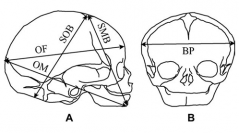

 Comptes Rendus Palevol
5 (3-4) - Pages 551-560
Comptes Rendus Palevol
5 (3-4) - Pages 551-560The study aimed at connecting obstetrical adaptations in Catarrhines with (1) locomotor specializations in the pelvic cavity, and (2) neonate encephalization. The material comprised 49 pelves, 18 skulls of adult females, and 9 neonate skulls. The neonate dimensions were placed in the pelvic inlet, midplane and outlet (mean pelvic shape obtained by Procrustes superimposition) and compared with adult dimensions. The results showed that non-human primates possess simple obstetrical mechanics that may present some difficulties, either because the fetus is proportionally large (Hylobates), or because locomotor specializations reduce the pelvic dimensions (Papio). Humans have complex obstetrical mechanics, resulting from bipedalism and parturition interactions. Encephalization did not play a determinant role in the evolution of human obstetrics.
Pelvis, Foetus, Obstetrics, Locomotion, Encephalization, Macaca, Papio, Hylobates, Pan, Gorilla, Homo